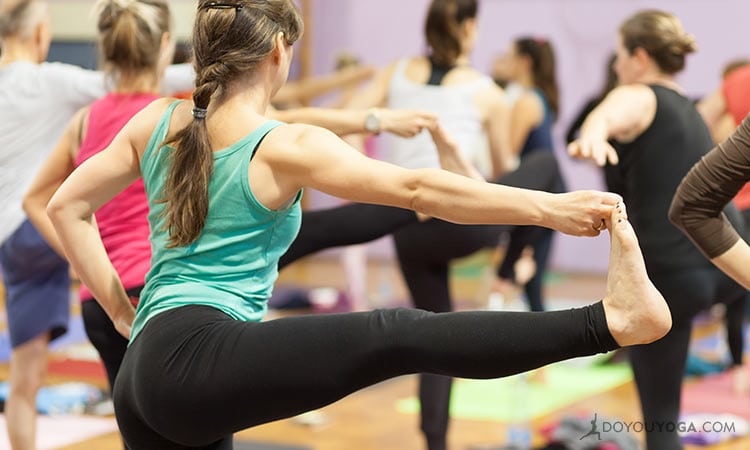In my 21 years of teaching and training all over the Midwest, Midsouth, and Southeast, I think I’ve been in EVERY exercise environment imaginable—large, medium, and small traditional health clubs; rural, suburban, and urban centers, corporate facilities, personal training and boot camp studios, and now, finally, my own dedicated yoga studio.
As a manager for almost all of those 21 years, I’ve learned a couple of things about students and instructors. I’d like to offer some criteria that can help both the yoga student and instructor find the most fitting personal and professional yoga “home.”
What kind of group energy turns you on?
If you are like me, you enjoy the tsunami wave of energy in a packed room, but at the end of the day, large groups can leave you depleted and forgotten in the crowd. You enjoy the choice of being able to stand out OR blend in and you want to be truly known as a student.
As a teacher, you want to have a relationship with each and every one of the people that come to your class. You thrive on being able to customize the yoga experience to the individual, even though you are teaching to a group. As a student you like it when your teacher asks about you personally, and wants to know what music you enjoy in your practice. You may find your best fit at a small to medium studio, probably pretty local to where you live or work.
If you thrive on the buoyancy of a big “up” group—teaching or attending this type of class leaves you feeling energized, awake, and ready for anything! You love the anonymity of lots of people, yet you feel like you can create instant connections with the masses.
You enjoy being able to run the show and you have the ability to give much of yourself in practice because the crowd is your fuel. As a student, you may love the ability to come and go with some measure of invisibility, OR the performer in that you might enjoy being on stage a bit at the front of the class, pushing your edges and adventurously trying all kinds of challenging pose variations.
How do you like your spirituality served?
One of the biggest differences that separate studio-yoga from big-box yoga is the spiritual factor. Typically, most big-box gyms approach yoga programming from a purely physical vantage point.
You come to class, you stretch, strengthen, and balance, you breathe for 4 minutes, and you leave. Classes may be branded according to the corporate manifesto/target market and the instructor may not have as much freedom to program independently.
At smaller independent studios, you can shop around to find the yoga traditions that speak to your spirit – Kundalini, Viniyoga, Iyengar, Ashtanga -they all draw on similar body positions for exercise, but the spiritual and mental teachings as well as the pace, flow, and organization of the practice vary widely.
Do you like scaffolding or a fortress?
Some folks need A LOT of structure. Routine and procedure are comforting for both the instructor and the student, especially if one is a beginner in either camp. In big box gyms, the programming tends to be long-standing and predictable—especially in an established location where all the patterns have been entrenched for years (like that 5:30pm Strength class that’s been packedto the rafters since Buddhawas a kid).
If you are the person who needs that consistency to get the most out of your practice, this may be a great place for you.
From a teaching standpoint, it can sometimes be a challenge to navigate the culture of your sprawling facility. Once you are in, though, you tend to become a fixture and can build a following over time, not to mention the relative job security of a big place that has been in the neighborhood forever.
Added bonus: some established large facilities are very well-resourced; they have lots of equipment and have the ability to update it frequently, as well as other services like on-site childcare (many would not exercise or teach without that last perk).
If you like a looser, more nimble feel in programming, small independent studios by nature can be more responsive to current trends and student requests. This is especially true when a studio has just opened up and is looking for as much traffic as possible.
I find myself asking my clientele every week what they want to see and do next and how we can add classes to best serve their needs, AND I can make a class format change the very next day if necessary.
So, all you new students and instructors, get out there and try on some places! Know this: the atmosphere that fit for you as a student may not jive with your teaching style. You may also find that a few years and some life experience can change your environmental preference as well.
Case in point: In my twenties, I was the front row ‘performer’ and LOVED it. Now, near 40, I really don’t want any extra attention—just a good practice from a caring instructor. Happy Hunting—may your process be fun and enlightening!


